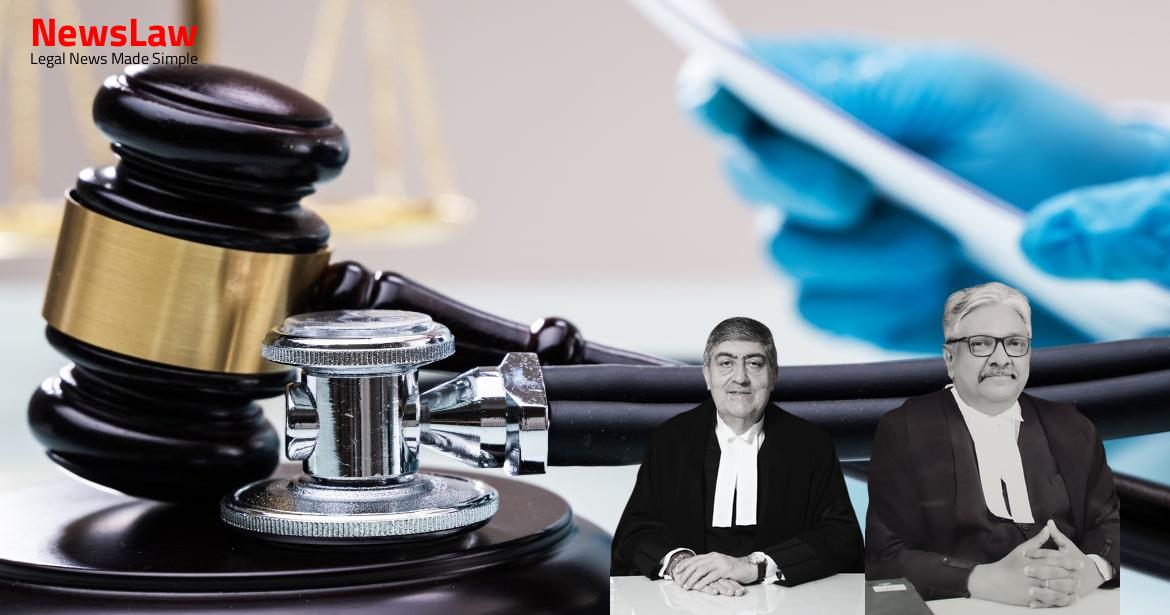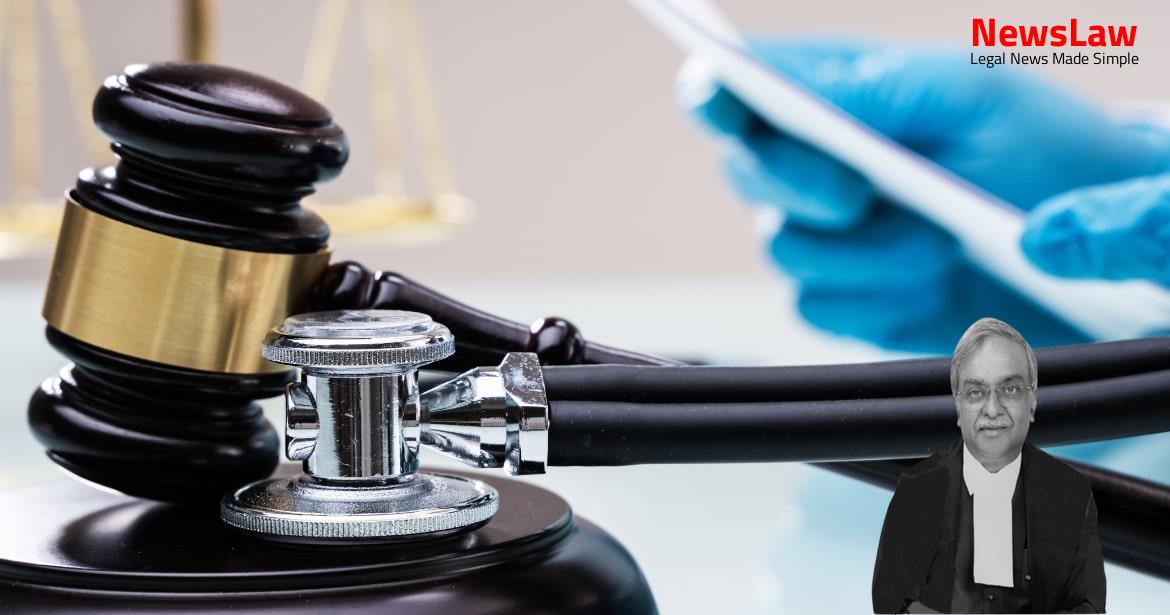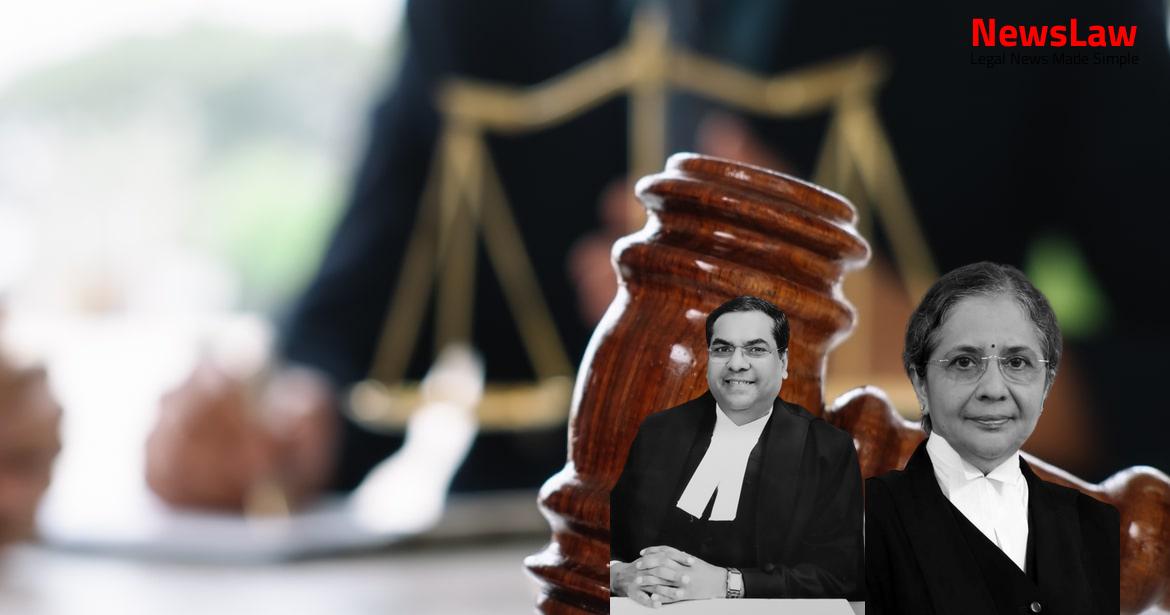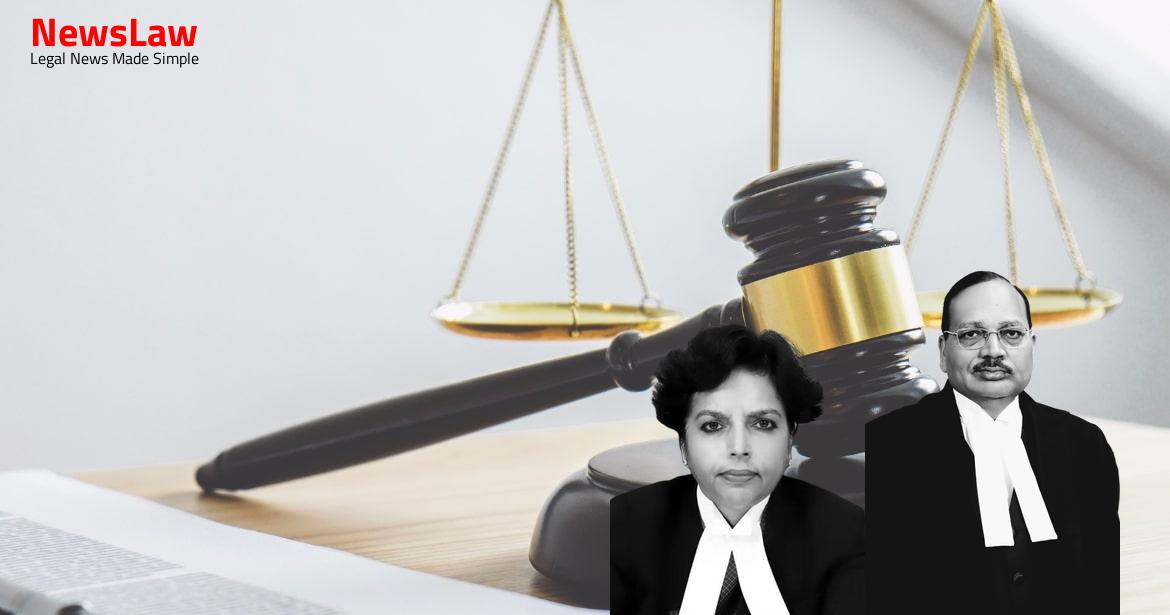In a significant legal development, the Supreme Court of India has set aside the conviction judgment in the case involving The State of India and Accused No.4. The decision marks a pivotal moment in the ongoing legal proceedings. Stay informed about the latest updates on this case and the implications of this ruling.
Facts
- The High Court allowed the appeal filed by the State and found the appellant (Accused No.4) guilty of the offence under Section 397 of the Indian Penal Code.
- The appellant was sentenced to undergo R.I. for 7 years and pay a fine of Rs.1000/- with a default clause.
- Fingerprints on Q-1 and Q-2 were found to match with those of the appellant, which was deemed as a mistake in appreciating the evidence of PW15.
- PW15 visited the farmhouse of PW-1 the day after the incident and developed five chance prints (Q1 to Q5).
- Fingerprints were lifted using transparent adhesive tape and pasted on glass pieces, leading to the issuance of Exh.P-13 certificate.
- P-13 certificate corroborated the evidence of appellant’s fingerprints matching the chance prints obtained by PW15.
- PW-11, a police constable, testified that he apprehended the appellant after chasing him in the forest post the dacoity incident.
- The appellant’s conduct of running in the jungle at night supported the prosecution’s version of events.
- It was only after PW-11 produced the appellant before the Investigating Officer that interrogation and subsequent recovery took place.
- The High Court found the evidence of PW-11 reliable as he was not cross-examined, and his testimony was accepted in full.
- The incident took place on 16.9.1996 at around 9:00 p.m. in the presence of several witnesses.
- The complaint was promptly lodged within an hour of the incident without revealing the accused names.
- No identification parade was conducted which raised doubts about witness identification.
- During the incident, the appellant and others demanded ornaments and cash from the family under threat.
- Appellant was arrested in a neighboring village and various looted items were recovered from a ditch near the national highway.
- The recovery of items from the ditch was seen as strong evidence against the appellant as no one else knew about their location.
Also Read: Supreme Court Judgment on Single Till Mechanism for HRAB Calculation: A Comprehensive Analysis
Arguments
- The appellant’s identity was not established by the prosecution witnesses, as noted by the High Court.
- The High Court’s reliance on fingerprints not found on produced articles is questionable.
- Citing the judgment in Mohd. Aman v. State of Rajasthan, it is argued that fingerprints should not have been considered without the related articles being presented.
- No identification parade was conducted due to the incident happening at night.
- Complaints have been raised regarding the recovery being made from a public place.
Analysis
- The High Court relied on the deposition of PW-11 to conclude that the appellant ran away, strengthening the prosecution’s case.
- The recovery of clothes (MO2 to MO17) was another circumstance the High Court used to convict the appellant.
- The absconding of six accused raised doubts on the reliability of the prosecution case.
- The trial court’s acquittal should be respected unless its decision is unjustifiable or perverse, which was not the case here.
- The evidence of PW-11 about the appellant running away was questioned by the appellant’s counsel.
- The evidence collected in 1996 involved 8 accused, out of which only the appellant faced conviction in the High Court.
- The importance of producing key evidence like the brass jug was highlighted, as its absence weakened the prosecution’s case.
- The discrepancies in the recovery process, like not exhibiting the seized items, raised doubts about the prosecution’s claims.
- The reliance on PW-11’s testimony needed to be reevaluated, especially if the appellant was arrested by a different witness.
- The acquittal of other accused underscores the need for caution in convicting the appellant based on circumstantial evidence.
- PW-14 admitted to not obtaining permission from the Magistrate for taking the fingerprints of the accused.
- The Magistrate referred to the judgment in Mohd. Aman’s case where it was highlighted that even though specimen fingerprints were taken multiple times for Mohd. Aman, they were never taken before or under the order of a Magistrate as per the Identification of Prisoners Act.
- While the police is legally allowed to take fingerprints under Section 4, taking them before or under the order of a Magistrate was considered important to ensure transparency and avoid any suspicion of evidence fabrication.
- The High Court erred in interfering with the acquittal of the appellant.
- Prosecution witnesses were unable to identify the appellant.
- The principles governing when an Appellate Court can reverse an acquittal were not met.
- The circumstance regarding the conduct of the appellant, based on the evidence of PW-11, seemed to be an error.
- Inadequacies were observed by the Trial court in regard to the finger-prints.
Also Read: Selection and Appointment of Judicial Officers in Himachal Pradesh
Decision
- The appeal is allowed and the judgment of the High Court convicting the appellant is set aside.
- An affidavit is to be filed within four weeks.
- Judgment is reserved for further proceedings.
- It is deemed unacceptable that the accused could not be apprehended if proper measures were taken.
- The state is called upon to file an affidavit signed by the superintendent of police detailing the steps taken to apprehend the accused and the current efforts being made.
Case Title: NAGARAJA Vs. STATE OF KARNATAKA
Case Number: Crl.A. No.-000066-000066 / 2012



